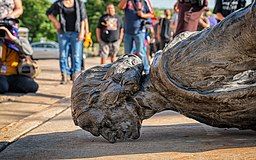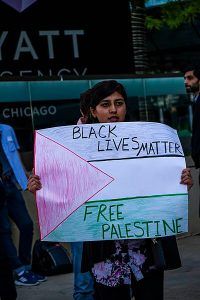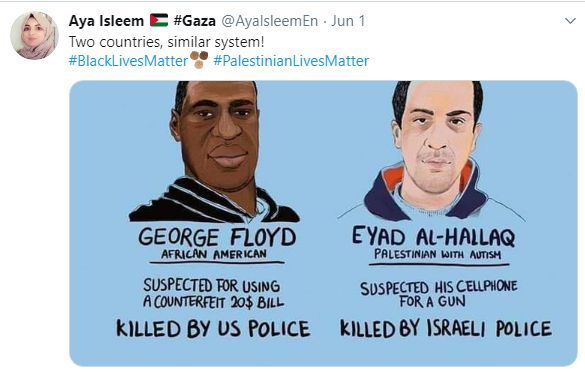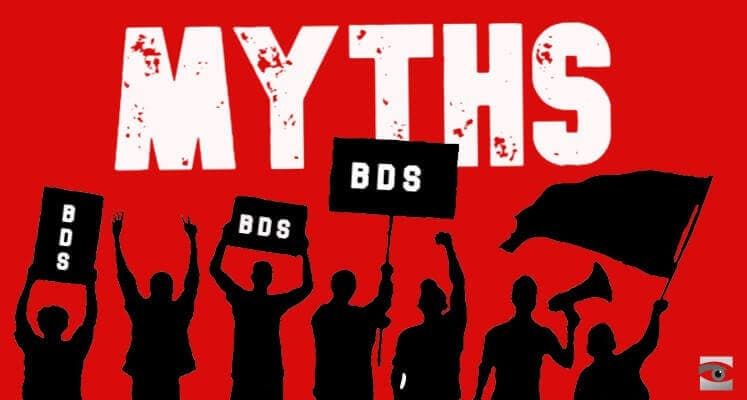Statues, names of streets, schools, and public squares are expressions of a country’s culture and history. But what if the way people view their national heroes changes over time? This is what America is grappling with today. Over the last few days, nationwide protests have catalyzed calls across the United States for the removal of all statues of George Washington and Thomas Jefferson because the men they enshrine were slave owners.
But in the part of the West Bank controlled by the Palestinian Authority, a whole different kind of under reported cultural expression exists.
Join the fight for Israel’s fair coverage in the news
The Cultural Reckoning You’re Not Hearing About
On Tuesday June 11 CNN commentator Angela Rye weighed in on this issue:
“American history is not all glorious… George Washington was a slave owner. We need to call slave owners out for what they are. Whether we think they were protecting American freedom or not, he wasn’t protecting my freedoms – my ancestors weren’t deemed human beings to him.”
Also last week, protesters in Camden, New Jersey began calling for the removal of the city’s Christopher Columbus statue. They said the Italian explorer was responsible for the genocide and exploitation of native peoples in the Americas. Camden responded to the outcry of its residents by taking down its Columbus statue, joining other cities across the United States.

News organizations dutifully reported on statues being pulled down around the United States. This is a big story: Americans struggling with the darker side of their history by questioning long accepted expressions of their cultural heritage. And this cultural reckoning has crossed the Atlantic. Protesters in England pulled down the statue of 17th Century slave trader Edward Colston, and vandalized a statue of former British Prime Minister Winston Churchill with graffiti declaring him a “racist”.
But what about the Palestinian camp for high school boys organized by Fatah, held earlier this year, that was allegedly named after the deceased Palestinian terrorist Omar Abu Laila? News organizations have missed the story of how Abu Laila shot and murdered Israelis Gal Kaidan and Rabbi Achiad Ettinger at the Ariel junction in the West Bank, in March 2019. Rabbi Ettinger was wounded at the scene and died 24 hours later.
When it comes to the Palestinian issue, media outlets are only reporting part of the story. On the one hand, they have been using the death of George Floyd to promote a ‘Palestinian Lives Matter’ narrative. Yet when it comes to exposing stories that lay bare the Palestinian Authority’s systematic naming of public squares, streets, and summer camps after terrorists who killed Israelis, intrepid reporters and analysts suddenly develop a case of cold feet.

In and of itself, choosing not to run with yet another story about the Palestinian Authority naming a camp after a Jew killer isn’t evidence of journalistic malfeasance. This is, after all, a faraway story that many people may not be interested in.
However, media outlets want to have it both ways. This is what CNN reported on June 8:
A picture of George Floyd has appeared in the Palestinian city of Bethlehem on the concrete wall built by Israel that separates it from the West Bank. Since it went up almost 20 years ago, a response to the violence of the second intifada, or armed uprising, the wall has become one of the world’s most famous canvases for political graffiti.
On the one hand, news organizations are drawing parallels between the George Floyd story and the Palestinian issue. On the other hand, they neglect to compare the removal of statues and other national cultural expressions with Palestinian expressions of culture like the naming of streets, summer camps, and public squares after terrorists.
This is a subtle type of journalistic bias that selectively reveals or suppresses information. As such, the journalistic integrity of news organizations that report this way is called into question.
BDS’s Trojan Horse?
When news organizations provide oxygen to the George Floyd-Palestinian connection they legitimize radical anti-Israel groups. These shadowy organizations are exploiting the tragic and tense situation across the United States to advance an agenda that has one primary goal: the end of Israel.

Activist groups have hijacked George Floyd’s death and the protest movement it spawned. A cynical campaign by BDS is using mainstream news organizations like the BBC as a Trojan horse. Boycott, Divest and Sanction proponents are now linking Floyd’s death to the treatment of Palestinians by the IDF. Endorsed by Amnesty International, this campaign claims that racism and violence in America is caused by Israel.
This is the problem with reporting facts selectively: it serves as a slippery slope to blatant propaganda.
Whose Culture Is It Anyway?
Mahatma Gandhi said that a nation’s culture, “…resides in the hearts and in the soul of its people.” Sadly, this truism doesn’t apply to the Palestinian people. Their culture, and cultural expressions have been hijacked by the Palestinian Authority. Ramallah will do anything to soften its Jew hatred by couching it in the social justice trends of the moment. Since George Floyd’s death, the P.A., and its fellow travelers in the BDS Movement have been exploiting America’s trauma to demean and delegitimize Israel.

And with their selective silence news organizations around the world are providing cover, intentionally or not, for the spread of such vitriol. As 18th century Anglo-Irish statesman and philosopher Edmund Burke said, “The only thing necessary for the triumph of evil is for good men to do nothing.”
Related reading: BDS: Myths and Facts
If tearing down statues is a cultural expression against racism, what does naming camps, streets, and public squares after terrorists say about the dominant culture? The media isn’t reporting these crucial parts of the story:
• Street names being named after killers of Israelis
• Over 30 Palestinian schools named for terrorists and Nazi collaborators
• Camps named after terrorists
Perhaps some streets have no name…
Enjoyed reading this article? Follow the HonestReporting page on Facebook to read more articles debunking news bias and smears, as well as others explaining Israel’s history, politics, and international affairs. Click here to learn more!
Images: Christopher Columbus statue torn down via Wikimedia Commons; Protesting Israeli treatment of Palestinians via Wikimedia Commons


